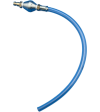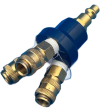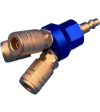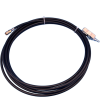
Hey there! If you've ever wondered why your energy bills seem to climb higher and higher each month or why your HVAC system is not performing as well as it used to, you're in the right place. Today, we're diving deep into the world of HVAC systems, specifically focusing on how dirty ducts can significantly impact efficiency and increase your energy costs. This is a topic that often flies under the radar, but the implications can be substantial.
Understanding HVAC Systems: A Brief Overview
Before we delve into the nitty-gritty, let's take a quick step back to understand what HVAC systems are all about. HVAC stands for Heating, Ventilation, and Air Conditioning. These systems are essential for maintaining comfortable indoor temperatures, providing clean air, and ensuring proper ventilation in both residential and commercial spaces.
Components of an HVAC System
An HVAC system typically consists of several key components:
- Furnace: Heats air distributed through the ductwork.
- Air Conditioner: Cools the air and removes humidity.
- Ductwork: Channels through which heated or cooled air is distributed.
- Thermostat: Controls the temperature settings.
- Ventilation System: Ensures fresh air exchange and regulates indoor air quality.
The Role of Ductwork
Ductwork is a crucial component of any HVAC system. It acts as a highway that carries conditioned air from the HVAC unit to different parts of your home or building. But what happens when these ducts become dirty or clogged? That's what we're here to explore.
The Impact of Dirty Ducts on HVAC Efficiency
Dirty ducts can wreak havoc on your HVAC system's efficiency. Let's take a closer look at how this happens:
1. Airflow Restriction
When ducts collect dust, debris, and other contaminants, they obstruct airflow. Imagine trying to breathe through a straw that's partially blocked. It's a struggle, right? Similarly, your HVAC system has to work harder to push air through clogged ducts, leading to reduced efficiency.
Real-World Scenario
Consider a family living in a suburban home. They notice that their HVAC system is running constantly, yet their home is never quite comfortable. Upon inspection, they discover that their ductwork is filled with dust and pet hair. The restricted airflow causes their system to work overtime, leading to both discomfort and higher energy bills.
2. Increased Energy Consumption
When an HVAC system struggles to maintain the desired temperature due to obstructed airflow, it consumes more energy. This increased demand for power is directly reflected in your energy bills.
Real-World Scenario
Imagine a small business owner who notices that her energy costs have skyrocketed over the past few months. Upon investigation, she finds that the building's ductwork hasn't been cleaned in years. The accumulated dirt and debris are causing her HVAC system to run inefficiently, leading to a significant increase in energy consumption.
3. Reduced Lifespan of HVAC Components
Dirty ducts don't just affect efficiency and energy consumption; they can also reduce the lifespan of your HVAC system's components. When the system works harder to compensate for restricted airflow, wear and tear increase, potentially leading to premature breakdowns and costly repairs.
Real-World Scenario
A couple invests in a new HVAC system, expecting it to last for many years. However, they neglect regular duct cleaning. Over time, the strain on the system due to dirty ducts causes it to fail earlier than expected, resulting in unexpected repair costs and the need for a new system.
The Connection Between Dirty Ducts and Indoor Air Quality
Dirty ducts not only impact HVAC efficiency but also have significant implications for indoor air quality. Let's explore how these two factors are interconnected:
1. Allergens and Contaminants
Ducts can accumulate a variety of allergens and contaminants, including dust, pollen, pet dander, and mold spores. When these particles are circulated throughout your home or office, they can trigger allergies and respiratory issues.
Real-World Scenario
In a daycare center, several children begin to experience frequent allergies and asthma attacks. Upon investigation, it is discovered that the ductwork is filled with dust mites and mold spores, exacerbating the children's health issues.
2. Unpleasant Odors
Dirty ducts can become a breeding ground for bacteria and mold, leading to unpleasant odors circulating throughout your space. This can create an uncomfortable environment, especially in commercial settings where customer impressions matter.
Real-World Scenario
A restaurant owner notices that customers are complaining about musty odors inside the dining area. After a thorough inspection, it becomes clear that the ductwork is the culprit. The accumulated mold and mildew are causing the unpleasant smell, negatively impacting the dining experience.
3. Increased Sickness
Poor indoor air quality due to dirty ducts can contribute to increased sickness among occupants. This is particularly concerning in environments like schools and hospitals, where vulnerable populations are present.
Real-World Scenario
In an office building, employees frequently fall ill with respiratory infections. The building manager discovers that the ductwork is filthy, contributing to poor indoor air quality and the spread of germs.
The Historical Context: How We Got Here
The issue of dirty ducts affecting HVAC efficiency is not a new one. In fact, it has been a concern since the advent of centralized heating and cooling systems. Let's take a brief journey through history to understand how this problem has evolved.
Early HVAC Systems
The first centralized heating systems date back to ancient Rome, where hypocaust systems were used to heat public baths and buildings. These systems relied on underground channels to distribute heat, but they were prone to blockages and inefficiencies.
The Rise of Modern HVAC Systems
The 20th century saw significant advancements in HVAC technology, with the introduction of forced-air systems and ductwork. While these systems offered improved comfort and control, they also introduced the challenge of maintaining clean ducts to ensure efficiency.
Current Trends and Practices
Today, the importance of regular duct cleaning is widely recognized, but not everyone prioritizes it. Many homeowners and businesses focus on visible components like the furnace or air conditioner, neglecting the hidden network of ducts that play a crucial role in overall system performance.
Current Trends: Increased Awareness and Technological Advancements
In recent years, there has been a growing awareness of the impact of dirty ducts on HVAC efficiency and indoor air quality. Several trends are shaping the way we approach duct maintenance:
1. Emphasis on Indoor Air Quality
As people become more health-conscious, there is a heightened focus on indoor air quality. This has led to increased demand for duct cleaning services and products that improve air quality, such as air purifiers and advanced filtration systems.
2. Technological Advancements
Advancements in technology have made it easier to diagnose and address duct-related issues. Tools like robotic cameras and remote-controlled cleaning devices allow for thorough inspections and cleaning of even the most inaccessible ductwork.
3. Green Building Practices
The push for sustainability and energy efficiency in building design has led to the adoption of green building practices. This includes regular duct maintenance to ensure optimal HVAC performance and reduced energy consumption.
The Future of HVAC and Duct Maintenance
As we look to the future, several factors will influence the way we approach HVAC systems and duct maintenance:
1. Smart HVAC Systems
The rise of smart technology is transforming HVAC systems. Smart thermostats and sensors enable precise control and monitoring of indoor environments, helping to identify issues like restricted airflow due to dirty ducts.
2. Increased Regulation
As governments and organizations become more focused on energy efficiency and environmental impact, we can expect increased regulation around HVAC maintenance, including duct cleaning standards and requirements.
3. Consumer Education
With growing awareness of the impact of dirty ducts on both efficiency and health, consumer education will play a crucial role in driving regular maintenance practices. Homeowners and businesses will be more informed about the importance of keeping ducts clean for optimal performance.
Practical Steps to Address Dirty Ducts
Now that we've explored the impacts, trends, and future implications, let's discuss practical steps you can take to address dirty ducts and improve HVAC efficiency:
1. Regular Inspections
Schedule regular inspections of your HVAC system, including the ductwork. This will help identify any issues early on and prevent more significant problems down the line.
2. Professional Duct Cleaning
Hire a professional duct cleaning service to thoroughly clean your ductwork. They have the necessary equipment and expertise to remove dust, debris, and contaminants effectively.
3. Upgrade Air Filters
Invest in high-quality air filters and replace them regularly. This helps capture airborne particles before they enter the ductwork, reducing the buildup of contaminants.
4. Seal Leaks and Insulate Ducts
Inspect your ductwork for leaks and ensure it is properly insulated. Sealing leaks and insulating ducts can improve efficiency by preventing conditioned air from escaping and maintaining consistent temperatures.
Conclusion
Dirty ducts may seem like a minor issue, but their impact on HVAC efficiency, energy costs, and indoor air quality is anything but trivial. By understanding the role of ductwork in your HVAC system and taking proactive steps to maintain clean ducts, you can ensure optimal performance, lower energy bills, and create a healthier indoor environment.
So, the next time you notice a spike in your energy costs or experience discomfort in your home or office, don't forget to check those ducts! A little maintenance can go a long way in keeping your HVAC system running smoothly and efficiently. Thanks for reading, and here's to a cleaner, more efficient future!












Write a comment